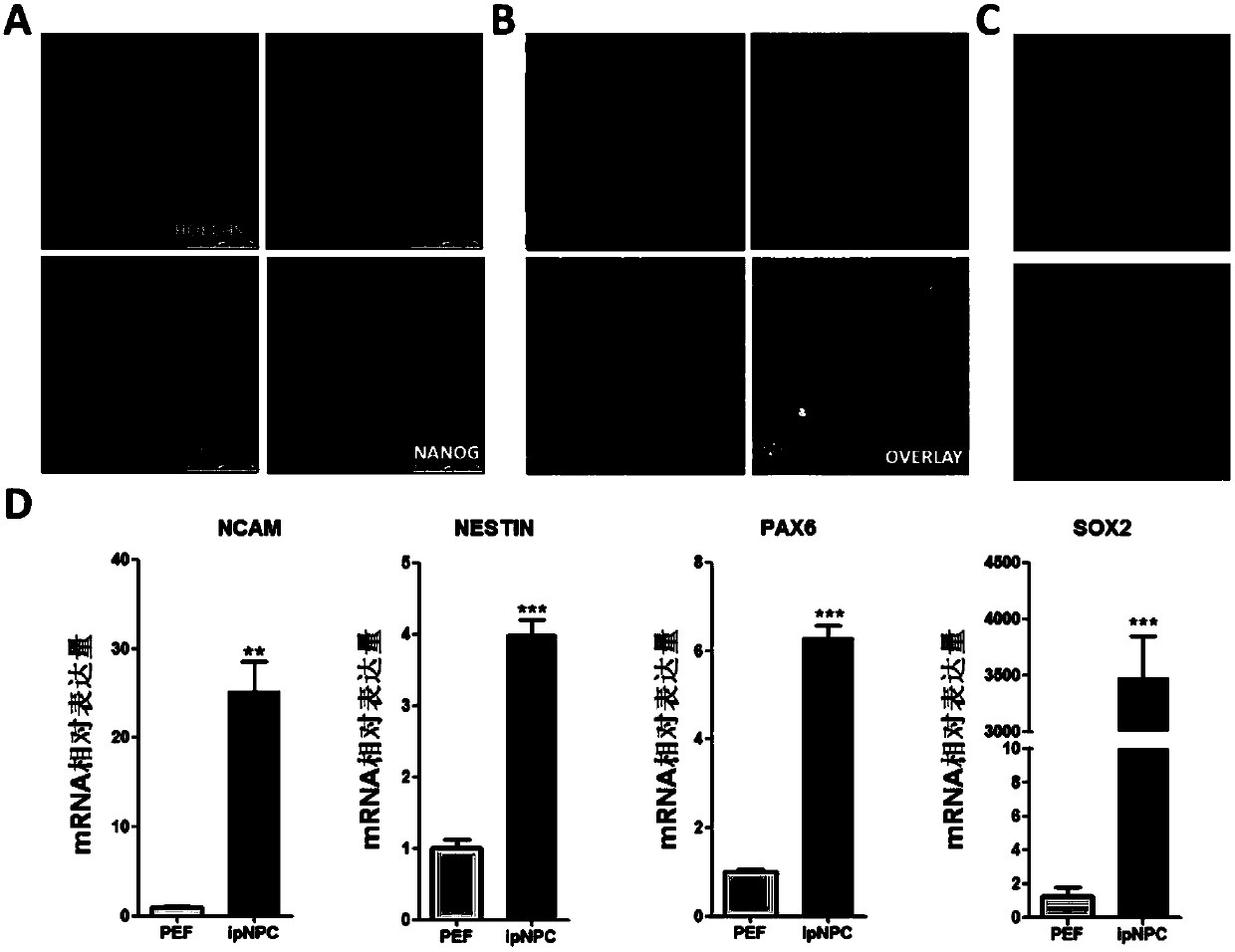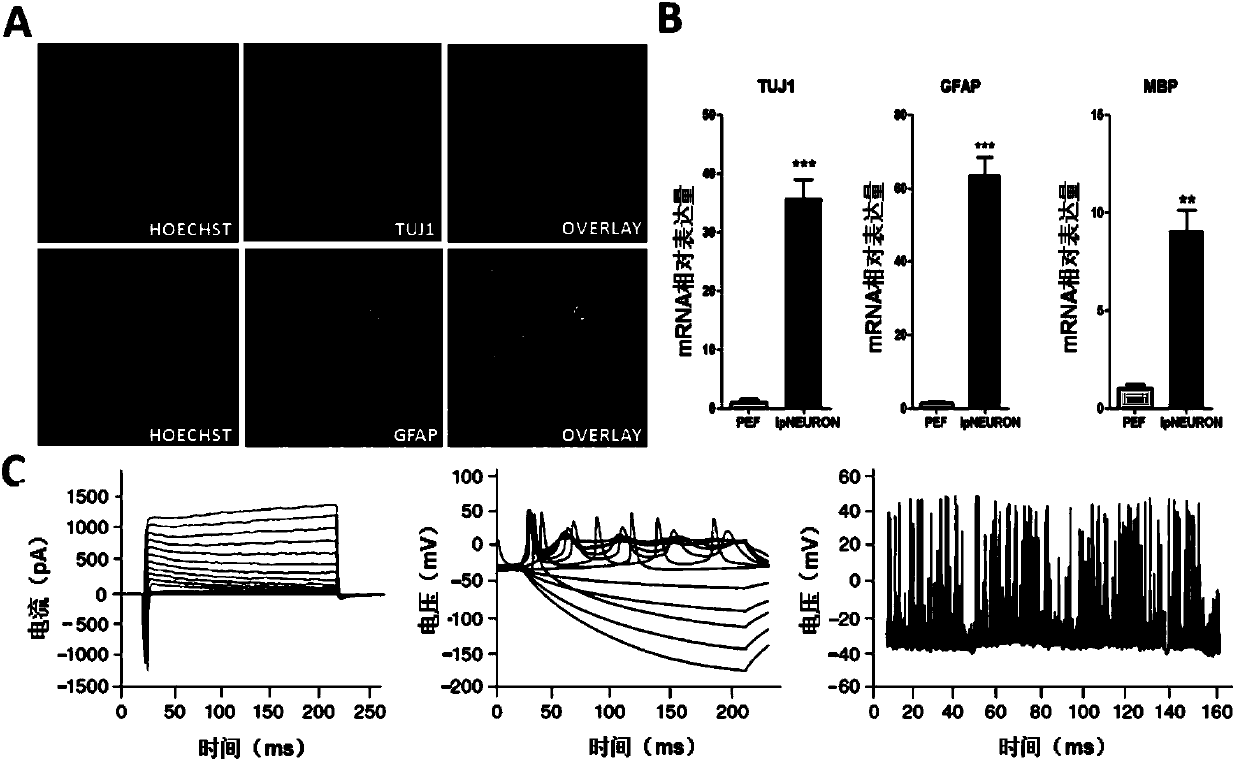Method for preparing pig neural stem cells by reprogramming
A technology of neural stem cells and cells, applied in the field of preparation of pig neural stem cells by reprogramming
- Summary
- Abstract
- Description
- Claims
- Application Information
AI Technical Summary
Problems solved by technology
Method used
Image
Examples
Embodiment 1
[0125] Example 1. Using reprogramming to obtain nerve cells from porcine embryonic fibroblasts
[0126] 1. Co-import
[0127] Pig embryonic fibroblasts (recorded in the following literature: Liu K., et al.Generation of porcine-induced pluripotent stem cells by using OCT4and KlF4porcine factors. Cell Reprogram.2012,14(6):505-513, public available from obtained from the Institute of Biophysics, Chinese Academy of Sciences) and cultured in vitro in porcine somatic cell culture medium.
[0128] First discard the original medium of porcine embryonic fibroblasts, then add TrypLE TM Express (Life Technology, USA, Cat. No.: 12605010) digested the cells at 37 degrees Celsius. After 5 minutes, the pig somatic cell culture medium was used to terminate the digestion reaction, and the cells were collected by centrifugation at 1000 rpm for 10 minutes, which were the pig embryonic fibroblasts to be introduced.
[0129] The Episomal plasmid vector pCXLE-hOCT3 / 4 expressing gene OCT3 / 4 (the n...
Embodiment 2
[0149] Example 2. Directed differentiation of porcine neural stem cells into functional nerve cells
[0150] 1. Obtaining functional nerve cells
[0151] The porcine neural stem cells prepared in Example 1 were inoculated on a culture plate coated with Magrigel (purchased from BD Biosciences, USA, product number: 354277), and neural differentiation medium was added for continuous culture for 3 weeks to obtain functional porcine neural cells.
[0152] 2. Detection of functional nerve cells
[0153] The cell morphology of the porcine functional nerve cells obtained in the above 1 is detected, and the morphology of the generated nerve cells is detected by indirect immunofluorescence whether they are neurons or glial cells.
[0154] The pig functional nerve cells obtained in the above 1 were subjected to indirect immunofluorescence staining, and the results were as follows: image 3 As shown in A, it can be seen that the porcine induced neural stem cells have neural differentiat...
PUM
 Login to View More
Login to View More Abstract
Description
Claims
Application Information
 Login to View More
Login to View More - R&D
- Intellectual Property
- Life Sciences
- Materials
- Tech Scout
- Unparalleled Data Quality
- Higher Quality Content
- 60% Fewer Hallucinations
Browse by: Latest US Patents, China's latest patents, Technical Efficacy Thesaurus, Application Domain, Technology Topic, Popular Technical Reports.
© 2025 PatSnap. All rights reserved.Legal|Privacy policy|Modern Slavery Act Transparency Statement|Sitemap|About US| Contact US: help@patsnap.com



